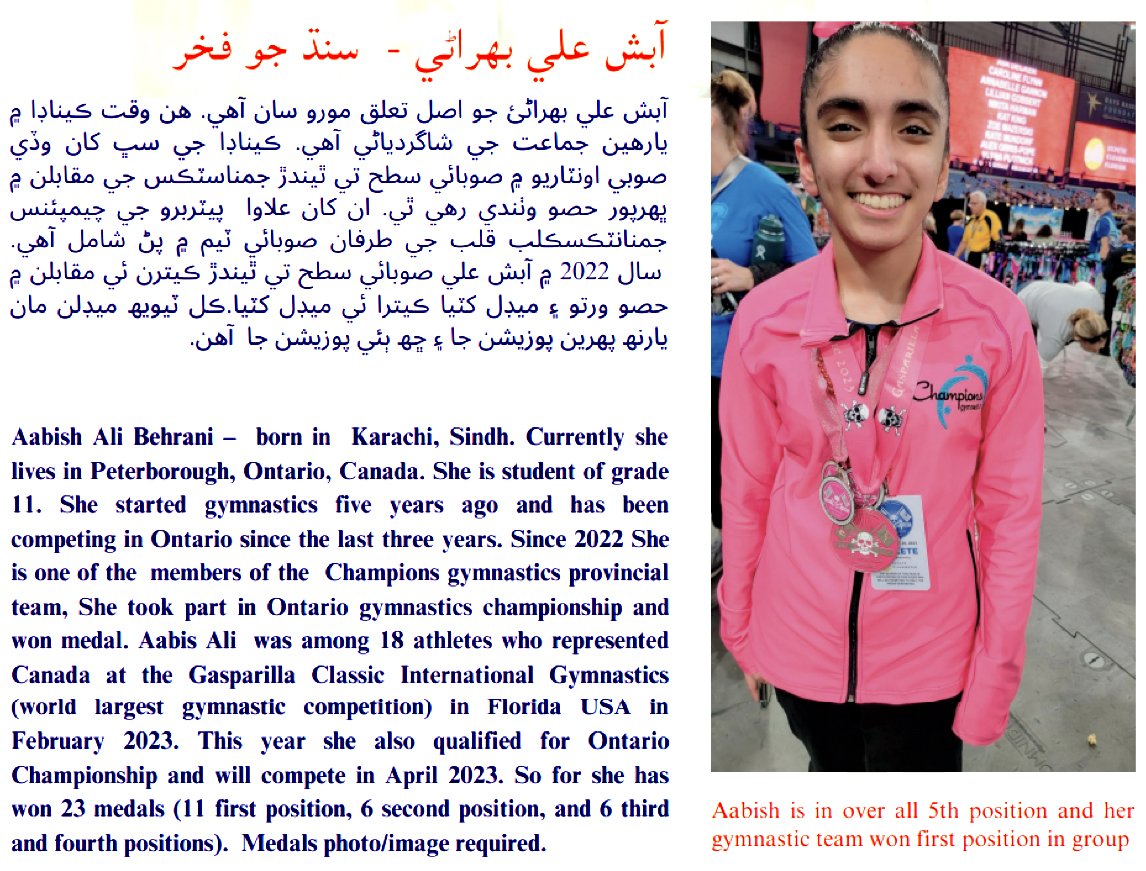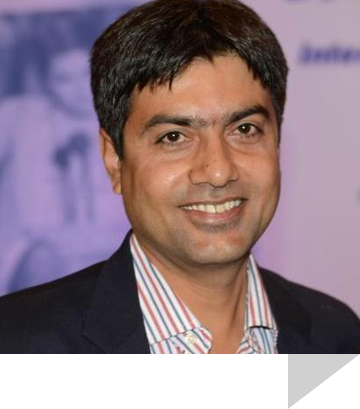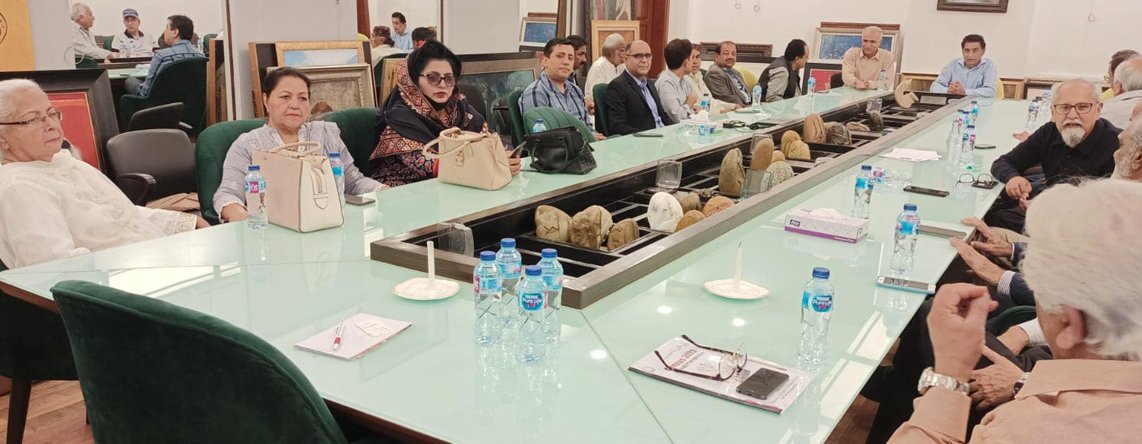Success Story
- Home
- Success Stories
Sindhi Association of North America
Our Success Story


Sed ut perspiciatis unde omnis iste natus error sit voluptatem accusantium doloremque laudantium, totam rem aperiam, eaque ipsa quae ab illo inventore veritatis et quasi architecto beatae vitae dicta sunt explicabo. Nemo enim ipsam voluptatem quia voluptas sit aspernatur aut odit aut fugit, sed quia consequuntur magni dolores eos qui ratione voluptatem sequi nesciunt. Neque porro quisquam est, qui dolorem ipsum quia dolor sit amet, consectetur, adipisci velit, sed quia non numquam eius modi tempora incidunt ut labore et dolore magnam aliquam quaerat voluptatem.
PRESIDENT
Maqbool A Halepota

Sed ut perspiciatis unde omnis iste natus error sit voluptatem accusantium doloremque laudantium, totam rem aperiam, eaque ipsa quae ab illo inventore veritatis et quasi architecto beatae vitae dicta sunt explicabo. Nemo enim ipsam voluptatem quia voluptas sit aspernatur aut odit aut fugit, sed quia consequuntur magni dolores eos qui ratione voluptatem sequi nesciunt. Neque porro quisquam est, qui dolorem ipsum quia dolor sit amet, consectetur, adipisci velit, sed quia non numquam eius modi tempora incidunt ut labore et dolore magnam aliquam quaerat voluptatem.
GENERAL SECRETARY
Mushtaq A Rajpar
Desperation and Urge to Organize
It was early 1984 when the clouds of cruelty and discrimination in the form of General Zia’s regime overpowered Sindh and its people. The news of the killing of scores of innocent villagers demanding restoration of democracy and political rights had become unbearable for a few Sindhis, who then lived in the vast continent of North America. Often they shared their pain and sorrows and mourned the inability of Sindhis back home to secure their rights.
The legend is that during some of those yearning sessions, a talk about forming an organized group gained traction. The key impetus for creating SANA was to organize the Sindhi community in North America in order to help Sindhis back home to secure their economic and political rights and preserve their identity, culture, and language.
The very fact that the Sindhi Association of North America (SANA) is celebrating its 25th anniversary is in itself a great achievement. Many similar organizations that aspired similar goals for preserving and promoting the cultural, economic, and political rights of their people came and faded away. It is to the credit of the North American Sindhi community that SANA has survived all obstacles and barriers that came its way. Granted it is not the same organization that its creators and pioneers had dreamed of. Nevertheless, it survives and is one of the important voices of North American Sindhis.


Initial Organization Efforts and Formation of SANA
A group consisting of Dr. Altaf Memon (Pennsylvania), Dr. Javaid Laghari (New York), Mr. Shankar Lakhvani (Pennsylvania), Dr. Aftab Kazi (Washington DC) and Mr. Anwar Memon (Toronto, Canada) became the organizing committee for exploring the feasibility of creating an organization of North American Sindhis. Soon thereafter, Dr. Aftab Kazi left for an overseas assignment and the remaining members of the organizing committee conducted an initial survey by sending a questionnaire to several Sindhi families in the USA and Canada. The response was reasonable which encouraged the Organizing Committee to begin the process of preparing an association charter and bylaws.
SANA Charter and Bylaws
This scribe was approached around August 1984 to help in the organizing efforts. As a result of these discussions, a formal proposal including the charter and by- laws and as well membership form was sent to about 80 families in North America. These packages were mailed from Toronto, Canada. Several positive responses and signed membership forms were received. Following these efforts, an interim Executive Committee consisting of Khalid Hashmani (President – Ontario, Canada), Naranjan Dudani (Vice President – Massachusetts, USA), Nazir Mughal (General Secretary – Pennsylvania, USA), Israr Ansari (Treasurer – Ontario, Canada), and Safia Mohammadlly (Information Secretary – Maryland, USA) was formed. Soon after initial formation, Dr. Nazir Mughal indicated that he had some time constra- ints and would not be able to fulfill his responsibilities as the General Secretary so Dr. Altaf Memon was persuaded to assume the role of General Secretary.
First 25 Members of SANA
By March 31, 1985, the FIRST 25 CHARTER MEMBERS OF SANA were Gul Agha, Altaf Memon, Israr Ansari, Naranjan Dudani, and Khalid Hashmani. Askar Qalbani, Mushtaq Kalwar, Shahzad Kazi, Nasreen Kazi, Inyatullah Kathio, Javaid Laghari, Shankar Lakvani, Razzak Memon, Bashir Memon, Safia Mohammadally, Aftab Mufti, Meerchand Oad, Nisar Ali Shah, Aftab Shaikh, Badar Shaikh (NY), Sajida Shaikh, Iqbal Tareen, and Saleem Wafai.
First General Body Meeting
(Washington DC, August 1985)
The first Annual General Body meeting (Later the annual meetings started to be called SANA annual conventions) was held in Rockville, Maryland in August 1985. This event was simply a dinner at a local restaurant (organizers: Sajid Akhund and Safia Mohammadally). The General Body formally approved the SANA charter and bylaws. It also added a clause on the disposition of any remaining funds to educational institutions in the event the association was dissolved. A heated discussion about the association goals and objectives took place in the meeting. In the end, the objectives as stated in the SANA charter were reaffirmed by the General Body.
The meeting approved the interim Executive Council for the full-term of two years beginning January 1, 1985. The body also appointed Agha Gul to investigate the process of securing a tax-exempt status and formed various committees – Membership Committee (Irshad Kazi, Zahoor Siddiqui, and Roshan Shaikh), Social and Cultural Committee (Latif Lighari, Karim Memon, and Razzak Memon), Publication Committee (Altaf Memon, Roshan Shaikh, and Razzak Memon), and Fund Raising Committee (Ali Nawaz Memon, Latif Lighari, and Inayat Kathio). A resolution in support of the formation of SANA by the Boston Area Sindhi Association was read at the meeting. The SANA members greatly appreciated this gesture and passed a “thank you” resolution.
After dinner, a “Sindhi Sham” was celebrated at the residence of Ali Nawaz Memon. A report in “SANGAT” (a quarterly newsletter of SANA) describes the Sindhi Sham as “It was an evening of Sindhi, songs, dances and great katchahry. The sham was started with a slide show showing historical and cultural sites in Sindh. The show was put together by Dr. Gul Agha. The scholarly narrative of Dr. Gul Agha was thought provoking and very much appreciated by the audience. Dr. Naranjan Dudani and Miss Lata Chainanni stole the show with their rendering of ‘Nangra Nimani da Jewewen teewen Palna’, “ho Jamalo’, and many other songs.”

Nourishing SANA in its Early Years
Everyone realized that to nourish SANA, whose membership was disbursed over the vast continent, had to be based on extensive consultation and democratic principles for decision-making. The practice of conducting regular membership surveys lasted for more than a decade. The first membership survey was conducted in November 1985 and asked members to vote for the venue, timing, and organizer names for General Body meetings from among a list of four-five cities. In addition, the survey contained a “Change of Address” area. By November 1985, SANA had become a formidable organization of 50 family and individual memberships.
Building SANA as an institution
The Second General Body meeting was held in the Niagara Falls/Buffalo area on July 4 and 5, 1986. The keynote speaker at this meeting was Dr. Feroz Ahmed spoke on how North American Sindhis can help their brothers and sisters back home. The key takeaway from his presentation titled “Light the Torch” was that only Sindhis who live in Sindh can regain the ground they have lost, overseas Sindhis can only help them in these efforts. The SANA EC thanked Abdul Fateh Halepoto, who designed the beautiful logo of SANA, Anwar Memon for contacting Mr. Halepoto and getting SANA pads printed, and Mrs. Parveen Laghari for bringing the pads with a new logo to the USA. At the meeting, Dr. Javaid Laghari made a presentation and distributed free copies of the first Sindhi Word Process- ing Software that he had developed at SUNY Buffalo. The SANA Treasurer issued financial statement for 1985 showing total receipts (membership fees, donations, etc.) of $ 1,1517.59 and total expenses of $409.75, With a small amount carried from 1984, the surplus stood at $1,221.09.
Strategy to Unify Sindhis, form an
Alliance and Win Rights
During these early years, the strategy to form a strong alliance of Sindhi intellectuals, political minds, and the affluent proved to be successful. With each year, not only did the number of donations increase so did the breadth of SANA activities and planning of more ambitious plans. The most cherished and ambitious plan was to form a world congress of all Sindhi organizations. The key objective was to create a single platform for all Sindhis to interact with each other and work together for the protection of Sindhi heritage and Sindhi rights. Proposals to engage in intensive advocacy campaigns with the US Executive and legislative branches on behalf of Sindhi hit strong approval from SANA members. SANA encouraged academicians such as Dr. Javaid Laghari, Dr. Gul Agha, Dr. Altaf Memon, Dr. Naveed Qamar, Dr. Aftab Mufti, Dr. Niranjan Dudani, and Dr. Aftab Kazi to undertake innovative activities such as creating Sindhi word processing software and collaborating with universities and colleges in Sindh. After military firings on several demonstrators in Sindh, SANA vigorously campaigned for the condemnation of such attacks; wrote letters to key members of the US Congress and senior State Department officials; and sent telegrams to the President and Prime Minister of Pakistan and leaders of countries to stop the bloodshed of Sindhis.
The December 1986 issue of SANGAT contained a thought-provoking article on the exploitation of Sindh’s energy resources with much of the benefit going to Punjab at the expense of Sindh’s poor people. The elections of the SANA Executive Council (EC) for the new term (1987-88) were amicably conducted in December 1986. The elected officers included Khalid Hashmani (President), Naranjan Dudani (Vice President), Javaid Laghari (General Secretary), Nadeem Qamar (Information Secretary), and Israr Ansari (Treasurer). The 1986 Financial report (published in March 1987 issue of SANGAT) listed total revenue of $ 2,119.44 and Expenses of $1,364.42 with an overall cumulative surplus of $ 1,871.86.
The third annual General Body meeting of SANA was held in Pittsburgh on the weekend of July 4, 1987. The coordinator of the meeting was Shankar Lakhvani. In addition to the keynote presentation by Dr. Aftab Kazi, Gope Chandar and his family made it a memorable musical evening with delightful Sindhi songs and dances. An impressive amount of $ 2,300 was pledged in donations at this meeting with the highest amount ($ 500) pledged by Mr. Saleem Ursani.
SANA As a grass-root organization of Sindhis
From its inception till at least 1990, Depending on the urgency of the situation or at least once each year, SANA Executive Council conducted annual surveys soliciting detailed input from members on how SANA could do better to improve the organization and meet the expectation of membership. The Executive Council openly discussed all matters, took formal votes, and documented all its decisions on a form called Vote/Voice Communication Form (VCF) and distributed it to its members.
For example, the December 1990 survey sent to 260 paid members was responded to by 50 members (19.2%). Throughout these years, three SANA programs secured the highest ratings: SANA General Body meetings, SANA Newsletter “SANGAT” and SANA Membership Directories. The surveys also showed strong support for other ‘SANA supported publications such as SINDH MONITOR, SANGAT WORLD, SANEH, and Sindh Journal of Asian and African Affairs. Other programs such as Video History of Sindh, and Sindhi Language Instructor Video also received considerable support. As SANA members had diverse views on political matters and religious matters. SANA always kept away from supporting any political party or engaging in activities that could be misconstrued as favoring one religion over another or one political party over other. The membership clearly told SANA Executive Council to solely focus on Sindh and Sindhis and not get carried away with Pakistani or Indian politics as it could be dividing for the SANA community. History clearly shows that as soon as SANA leadership became partial to one or another political party or failed to keep the focus on Sindh and Sindhis, it could not avoid division among its ranks.

The tradition of brainstorming problems faced by Sindh and Sindhis remained the cornerstone of interactions and reaching consensus.
SANA was always forthcoming in providing support to Sindhis in emergencies. For example, early in 1990, SANA gave a loan of $ 1,500 to a Sindhi student who was short on funds for paying tuition fees. Unfortunately, to the best of my knowledge, that loan was never paid-back to SANA. SANA also initiated projects in response to requests to provide computer equipment to the Institute of Sindhology, Mehran Engineering College (Nawabshah) and Mehran Educational Foundation,

SANA in the forefront for the struggle for Sindhi Rights
With several Sindhi organizations on various continents, all dedicated to the preservation of Sindhi heritage and winning their Rights, it was a proud moment to see the formation of the Australian Sindhi Association (ASA) in December 1989. Like other Sindhis, they too were shocked at the intensity of the vicious attacks on native Sindhis in Karachi and Hyderabad by the same people who were welcomed by their fathers. They embarked on a project to make a documentary “Blood of the Indus’. They appealed for support from SANA, which was immediately pledged. Both SANA and ASA proposed to organize a moot of all Sindhi associations overseas and to work to form a federation of all Sindhi associations.
The editorial in December 1989 issue of SANGAT says the following:
It is heartwarming that Sindhis living in different parts of the world are organizing themselves and realizing the importance of their roots and taking pride in their culture, heritage, and above all age-old civilization. Our religious tolerance, chivalry, and love for land and language are the cornerstones of our heritage. Shah, Sachal, and Sami have left us a vast knowledge, a pearl of immense wisdom, and a complete way of life for world peace, human dignity, and personal satisfaction. We should be genuinely proud of our Sindhyat and strive for its preservation. Along the way may be we should understand the problems faced by Sindhis in different parts of the world and help them achieve their goals. No matter where we live we should keep in contact with our land, keep our language alive and make Shah Bhitai, our national poet-philosopher, our guide in our lives. If present trends of awakening continued it will not be in a very distant future that a truly worldwide Sindhi organization emerges. Perhaps, SANA can play a role in its emergence
The actions of SANA did not consist of emotional outbursts but were a result of intensive consultation and a consensus-reaching process. Here is a quote from an article titled “Reflections” written by Dr. Feroz Ahmed in the same issue of SANGAT:
“While fundamental remedy to the malaise in Sindh shall continue to lie in the change in the offensive attitude of Mujajirs, there is something that Sindhis can also contribute to reducing the tensions. And the foremost among these is to recognize that solutions to political problems can only be political and not the big stick. Any attempt to take revenge from the MQM will only be counterproductive. No matter how ugly it is, the MQM still represents the Muhajir community, and the Sindhis will have to deal with it as such”
In order to focus SANA on Sindhi Rights, SANA EC approved a proposal by Iqbal Tareen to start an English publication “Sindh Monitor” to present Sindh’s point of view.
It was not only SANA Executive Council that was active in promoting Sindhi interests but also individual SANA members took many initiatives on their own. These included a letter-writing campaign by Mr. Rafik Mughal to various embassies and the President of the USA. The publication of Newswatch by Dr. Mithal Vakassi, Kauser Bhutto, and Manzoor Shah informed the world about the plight of Sindhis.
